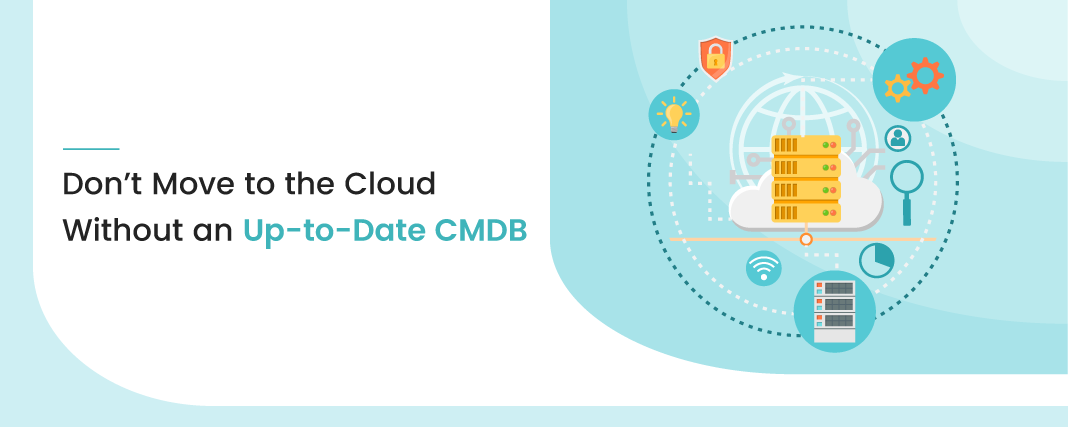There is a tremendous increase in the number of companies moving to, spending for, or adopting cloud technologies. This trend is all set to stay here per industry experts. Gartner predicts that public cloud revenue will grow by 6.3% in 2020, driven by an increasing focus on agility, efficiency, and automation.
However, some caution should be taken with all this growth. The cloud has been popular for approximately a decade now. Organizations may have already moved everything that’s easy to lift and shift. The remaining infrastructure is likely to be old, more complicated, and supported by various obsolete or specialized hardware. An up-to-date change management database (DMDB) is critical to migrate these applications safely.
What do You Get from Migrating Systems of Record?
Migrating old, complex, and mission-critical applications to the new setup—and consolidating the hardware that they depend on—is admittedly difficult. These applications aren’t cloud-native, and they may need significant refactoring to take advantage of what the cloud has to offer.
Leaving these applications on-premises may not be an option either. When companies move their legacy applications to the cloud, they have the ability to radically simplify those applications, making it faster to process business records, automate previously manual processes, and create a more compliant, secure, and responsive organization in total.

Looking for CMDB Software? Check out SoftwareSuggest’s list of the Best CMDB Software solutions.
In other words, companies that complete the process of moving to the cloud by migrating and modernizing their legacy applications will out-compete those that don’t.
Traditional CMDBs Falls Down During Cloud Migrations
An up-to-date CMDB might not have been needed for the earlier, easier cloud migrations, but more complex migrations will require one. An up-to-date CMDB, which represents a single source of truth, will also make cloud governance easier once the migration is complete.
Doing a simple lift-and-shift may have been possible without a CMDB because you were likely lifting a newer application, and it was hosted on servers that were all bought within the last purchase cycle. In other words, you could personally point to all the hardware hosting that application, which also had a relatively short amount of time to develop dependencies.
Migrating older applications is a challenge that exceeds the capabilities of traditional CMDBs. These applications may be old enough that you weren’t at the company when you purchased them. This means that you haven’t personally documented which hardware supports the application, and those records may no longer exist. What’s more, applications tend to develop more dependencies as they get older, and those may not be documented as well.
Even if you spend months with a spreadsheet documenting the hardware and software dependencies of a legacy application, there’s a good chance you won’t get it right, which will create problems that may potentially derail you on migration day. Even if you do get it right, your traditional methods will quickly lose all relevance once the application is in the cloud.
A CMDB Adds Cloud Speed to Asset Management
Managing applications, once they’re in the cloud, is completely beyond the scope of spreadsheets. In continuation of our legacy application example, imagine that the application has now been decomposed into microservices, with each service hosted inside a container. Containers aren’t static, and their characteristics aren’t immutable. The signifiers that you’d usually record on a spreadsheet—IP addresses and port numbers—can change by the hour. What’s more, there are too many storage volumes, VMs, containers, and microservices to handle and keep track of.
The cure for this is a CMDB that is populated using agentless auto-discovery. Simply put, this process maps out an entire network—including cloud implementations, blade servers, VMs, and containers. It does this using methods such as SNMP, API calls, SSH, WPI, IPMI, and more. At the end of the process, you’ll have a complete list of all the assets on your network, as well as the relationships between them.
The benefit of this is that you’ll have what amounts to a complete hardware and software audit performed every hour or every day as needed. If you’re about to migrate an application to the cloud, auto-discovery will identify all the infrastructure and relationships that you need to account for—and it will do it in minutes rather than in months. Meanwhile, performing auto-discovery on a regular basis copes with the ephemerality of infrastructure and software within cloud volumes.
Even if you’re just beginning your journey to the cloud, an up-to-date CMDB is a worthy investment. Whether you’re migrating applications to the cloud or managing them later, a CMDB with agentless auto-discovery helps render complicated tasks into simple, manageable, and increasingly automated routines. Don’t migrate to the cloud without it.
Need Any Technology Assistance? Call Pursho @ 0731-6725516







